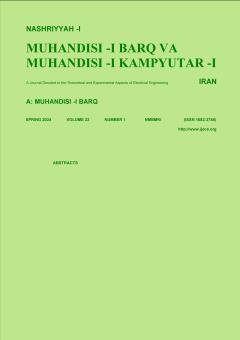-
-
List of Articles
-
Open Access Article
1 - Analysis of the Effects of Different Cyber Attacks on the Secondary Controller in Island Microgrids
Abdollah Mirzabeigi ali kalantarnia -
Open Access Article
2 - Optimal Design and Analysis of Fault Current Limiter Based on Variable Air-Core Series Reactor
Moslem Amini Faskhoodi Aliakbar Damaki Aliabad -
Open Access Article
3 - Comparison of FCS-MPC Predictive Control and Predictive Control Based on Lyapunov Theory in Seven-Level PUC Rectifier
Alimohammad Mohammadpour Behbid Mohammad Reza Alizadeh Pahlavani Arash Dehestani Kolagar Alireza Davari -
Open Access Article
4 - Localization of Mobile Robot Using Smooth Two-Part Kalman Filter
Ramazan Havangi S. H. -
Open Access Article
5 - Covert Communication Using Jointly Spread Spectrum and Artificial Noise
Morteza Shafiee Neyestanak Iman Kazemi -
Open Access Article
6 - Detection of Quantized Sparse Signals Using Locally Most Power Full Detector in Wireless Sensor NetworkS
Abdolreza Mohammadi Amin Jajarmi -
Open Access Article
7 - Optimal Power Allocation for Maximizing Secrecy Rate in Physical Layer Security Using Frequency Diverse Array Directional Modulation and Artificial Noise
Mahdi Tayyeb Massoud Hossein Khaleghi -
Open Access Article
8 - Temperature Sensor Based on Terahertz Plasmonic Slot Waveguide Coupled with a Resonator
Alireza Dolatabady
-
The rights to this website are owned by the Raimag Press Management System.
Copyright © 2017-2026







